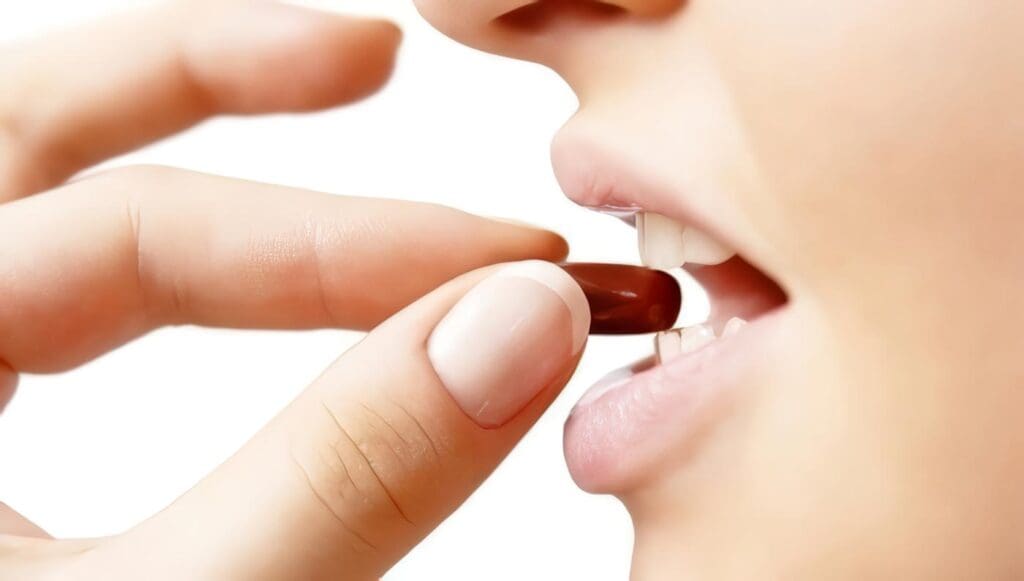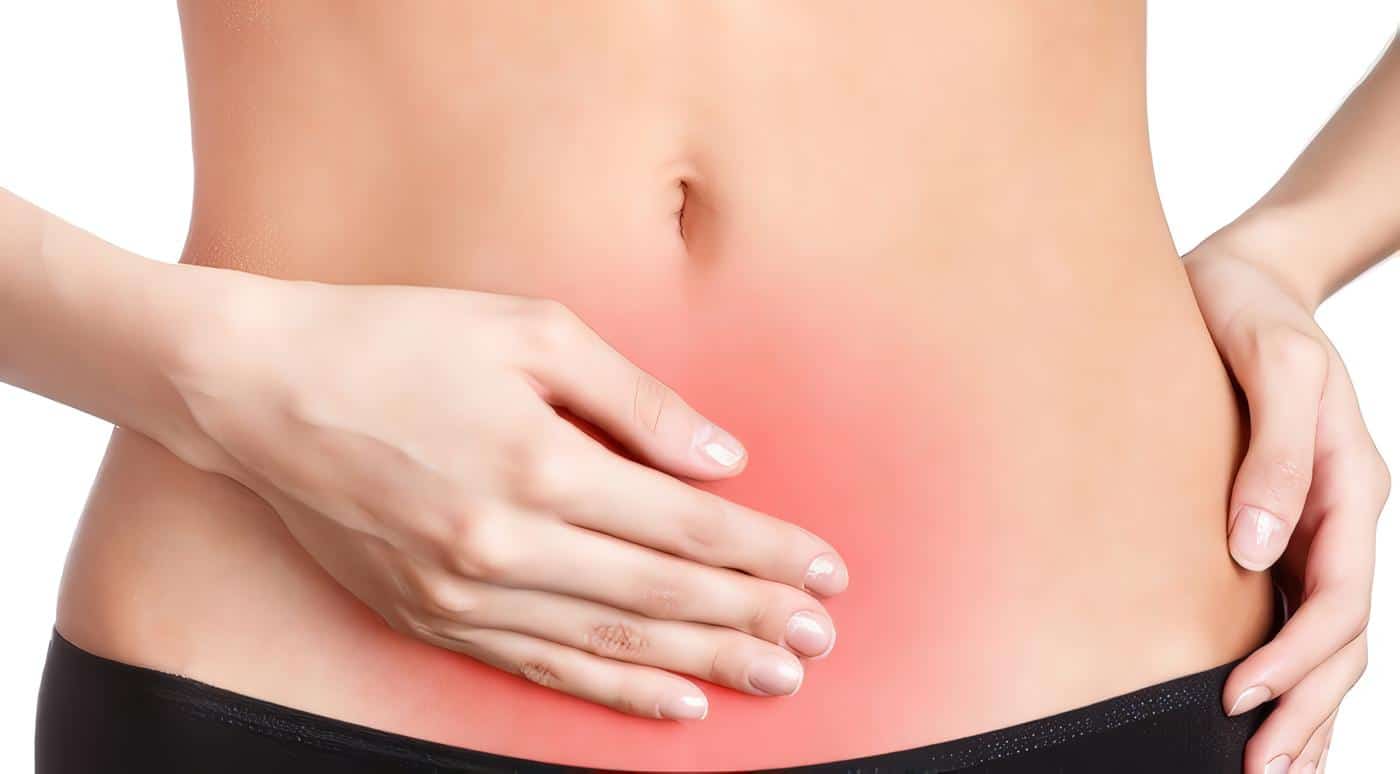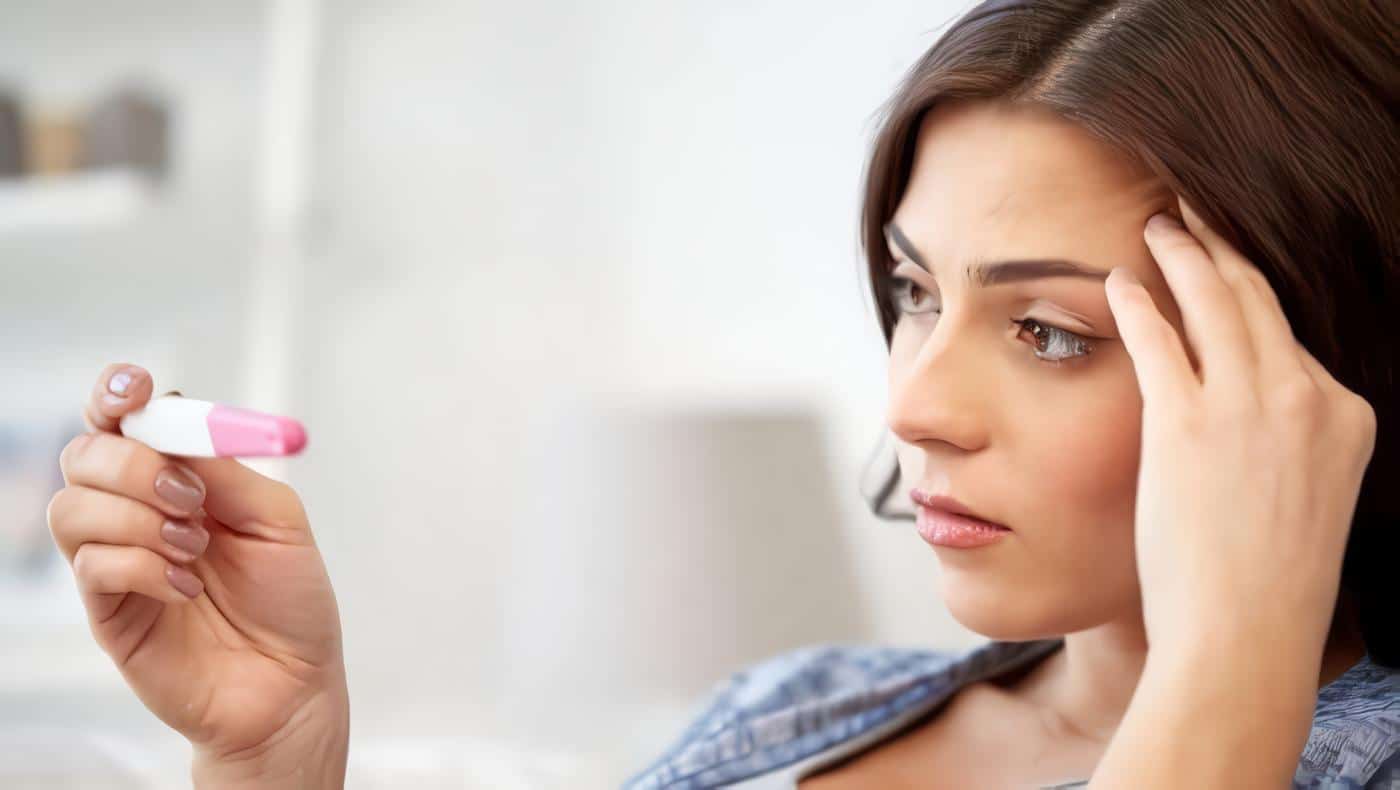¿Cuáles son los efectos terapéuticos de los antidepresivos sobre MDE en mujeres perimenopáusicas y posmenopáusicas?
Dos grandes ensayos clínicos aleatorios, doble ciego, controlados con placebo, examinaron la eficacia de la desvenlafaxina para el TDM en las mujeres perimenopáusicas y posmenopáusicas y definieron el uso de Criterios de STRAW.93,94
El tratamiento a corto plazo con dosis de 50 mg y 100-200 mg de desvenlafaxina condujo a significativas mejoras en los síntomas depresivos en comparación con placebo.93,94
Análisis post hoc de datos agrupados de estos ensayos mostraron una mejoría significativa con desvenlafaxina en los subgrupos de perimenopáusicas y posmenopáusicas, incluyendo una menor carga de síntomas y unas mayores tasas de remisión.95,96
Hasta la fecha, no se han estudiado otros antidepresivos en grandes ensayos aleatorios controlados con placebo de mujeres perimenopáusicas y posmenopáusicas bien definidos con TDM.
Ha habido una serie de pequeños estudios abiertos de otros antidepresivos, incluyendo inhibidores selectivos de la recaptación de serotonina (ISRS; citalopram, escitalopram, vortioxetina), inhibidores de la recaptación de serotonina y norepinefrina (IRSN; venlafaxina, duloxetina) y mirtazapina para tratar el TDM en la perimenopausia y mujeres posmenopáusicas, que han demostrado un efecto positivo en el estado de ánimo, así como SVM, sueño, ansiedad y dolor.97-99,100-103
Bupropión, un inhibidor de la recaptación norepinefrina-dopamina (NDRI), a veces se prescribe solo o en combinación con un SSRI/SNRI para mujeres perimenopáusicas porque no produce tanto aumento de peso, disfunción sexual o somnolencia como ISRS/ISRS104.
Sin embargo, no hay ECAs de bupropión en la mujer perimenopáusica.
¿Existen Diferencias en la Eficacia entre los Tipos de Antidepresivos en el Tratamiento de Mujeres Peri o Posmenopáusicas con TDM?
Un gran ensayo aleatorizado doble ciego comparó el SNRI desvenlafaxina y el SSRI escitalopram en MDD en mujeres posmenopáusicas definidas utilizando criterios de STRAW; no se observó diferencia significativa en la eficacia después de 8 semanas de tratamiento de fase aguda, ni después de 6 meses de fase de tratamiento de continuación.105
Estos hallazgos estuvieron en contraste con un análisis previo de un gran conjunto de datos agrupados por sexo y edad (usando un límite de 50) comparando las tasas de remisión con venlafaxina, ISRS o placebo que encontró una ventaja significativa en tasas de remisión que favorecen la venlafaxina SNRI sobre los SSRI en mujeres mayores.106
Otros análisis post hoc de datos de ensayo clínico sobre el estado de la menopausia definida por edad no mostraron diferencias en la eficacia de la SNR venlafaxina frente a la ISRS fluoxetina en mujeres más jóvenes o mayores.107
Del mismo modo, un conjunto de análisis de ensayos de etiqueta abierta no mostró diferencias en tasas de res puesta a la reboxetina, sertralina o venlafaxina en mujeres mayores y jóvenes.108
Algunos estudios han observado un efecto superior de un ISRS sobre un inhibidor de la captación (NRI) tricíclico o norepinefrínico en mujeres premenopáusicas, pero no se encontraron diferencias en mujeres posmenopáusicas en estos estudios109-111.
¿Existen Respuestas Clínicas a los Antidepresivos según el Estado de la Menopausia?
Los estudios han examinado si existen diferencias en la respuesta de los antidepresivos en mujeres premenopáusicas frente a posmenopáusicas, y todos utilizan la edad como un variable proxy para el estado de la menopausia.
En el análisis combinado de los ensayos clínicos de venlafaxina, ISRS y placebos discutidos anteriormente, se observó una respuesta más pobre a los ISRS en la posmenopausia en comparación con las mujeres premenopáusicas, mientras que la respuesta a venlafaxina no difirió según el estado de la menopausia106.
Otro análisis agrupado no mostró diferencias en la respuesta antidepresiva a ningún bupropión o ISRS por estado de menopausia,112 ni tampoco una gran estudio de venlafaxina y fluoxetina.107
Al igual que en el estudio Thase 2005106, varios estudios abiertos han demostrado una resistencia relativa a los ISRS y otros antidepresivos en mujeres posmenopáusicas versus premenopáusicas; otros113-115 no encontraron una diferencia por estado de menopausia.111,116-118
Solo un estudio examinó el estado de la menopausia como un predictor de la recurrencia de la depresión durante el tratamiento con antidepresivos; las tasas de recurrencia de la TDM durante el tratamiento con venlafaxina o fluoxetina no difirieron en mujeres premenopáusicas versus posmenopáusicas107.
¿El tratamiento con Estrógenos mejora la Respuesta Antidepresiva en Mujeres Peri Menopáusicas o Posmenopáusicas?
Dos análisis post hoc de estudios aleatorizados controlados con placebo de ISRS en mujeres mayores con MDD encontraron una intervención entre el uso de la terapia concomitante de estrógeno y el efecto del tratamiento antidepresivo, lo que sugiere que el estrógeno puede aumentar la respuesta antidepresiva a los ISRS en mujeres deprimidas posmenopáusicas. 119,120
Dos ensayos pequeños de etiqueta abierta mostraron una respuesta mayor o acelerada a los ISRS en mujeres posmenopáusicas que también tomaron estrógeno,121,122 mientras los otros estudios no mostraron diferencias en las tasas de respuesta o remisión en mujeres con depresión peri o posmenopáusicas tratadas con ISRS que tomaron versus no tomaron estrógeno123,124.
En el análisis del gran conjunto de datos de los ensayos de venlafaxina, ISRS y placebo que se discutió anteriormente, el uso concomitante de TH en mujeres posmenopáusicas eliminó la disparidad en las tasas de respuesta a los ISRS en las mujeres pre vs. posmenopáusicas; la TH no afectó las respuestas a la venlafaxina.106
En un pequeño estudio ciego controlado con estrógeno, el aumento de estrógenos mejoró la respuesta antidepresiva en mujeres perimenopáusicas con TDM en remisión parcial.125
Referencias
- 1. Maki PM, Freeman EW, Greendale GA, et al. Summary of the National Institute on Agingsponsored conference on depressive symptoms and cognitive complaints in the menopausal transition. Menopause 2010;17:815-22.
- 2. Soares CN, Maki PM. Menopausal transition, mood, and cognition: an integrated view to close the gaps. Menopause 2010;17:812-4.
- 3. Steiner M. Female-specific mood disorders. Clin Obstet Gynecol 1992;35:599-611.
- 4. Arpels JC. The female brain hypoestrogenic continuum from the premenstrual syndrome to menopause. A hypothesis and review of supporting data. J Reprod Med 1996;41:633-9.
- 5. Rubinow DR, Schmidt PJ, Roca CA. Estrogen-serotonin interactions: implications for affective regulation. Biological Psychiatry 1998;44:839-50.
- 6. Lokuge S, Frey BN, Foster JA, Soares CN, Steiner M. Depression in women: windows of vulnerability and new insights into the link between estrogen and serotonin. J Clin Psychiatry 2011;72:e1563-e1569.
- 7. Wittchen HU, Becker E, Lieb R, Krause P. Prevalence, incidence and stability of premenstrual dysphoric disorder in the community. Psychol Med 2002;32:119-32.
- 8. Bloch M, Rotenberg N, Koren D, Klein E. Risk factors for early postpartum depressive symptoms. Gen Hosp Psychiatry 2006;28:3-8.
- 9. Yonkers KA, O’Brien PM, Eriksson E. Premenstrual syndrome. Lancet 2008; 371:1200-10.
- 10. The 2017 hormone therapy position statement of The North AmericanMenopause Society. Menopause 2017;24:728-53.
- 11. Nonhormonal management of menopauseassociated vasomotor symptoms: 2015 position statement of The North American Menopause Society. Menopause 2015;22:1155-72.
- 12. Gelenberg AJ, Freeman MP, Markowitz JC, et al. Practice guideline for the treatment of patients with major depressive disorder third edition. Am J Psychiatry 2010;167:1.
Otras Referencias
- 13. Harlow SD, Gass M, Hall JE, et al. Executive summary of the Stages of Reproductive Aging Workshop þ 10: addressing the unfinished agenda of staging reproductive aging. Menopause 2012;19:387-95.
- 14. Bromberger JT, Matthews KA, Schott LL, et al. Depressive symptoms during the menopausal transition: the Study of Women’s Health Across the Nation (SWAN). J Affect Disord 2007;103:267-72.
- 15. Rubinow DR, Johnson SL, Schmidt PJ, Girdler S, Gaynes B. Efficacy of Estradiol in Perimenopausal Depression: So Much Promise and So Few Answers. Depress Anxiety 2015;32:539-49.
- 16. Bromberger JT, Harlow S, Avis N, Kravitz HM, Cordal A. Racial/ethnic differences in the prevalence of depressive symptoms among middleaged women: The Study of Women’s Health Across the Nation (SWAN). Am J Public Health 2004;94:1378-85.
- 17. Brown JP, Gallicchio L, Flaws JA, Tracy JK. Relations among menopausal symptoms, sleep disturbance and depressive symptoms in midlife. Maturitas 2009;62:184-9.
- 18. Lin HL, Hsiao MC, Liu YT, Chang CM. Perimenopause and incidence of depression in midlife women: a population-based study in Taiwan. Climacteric 2013;16:381-6.
- 19. Maki PM, Rubin LH, Cohen M, et al. Depressive symptoms are increased in the early perimenopausal stage in ethnically diverse human immunodeficiency virus-infected and human immunodeficiency virusuninfected women. Menopause 2012;19:1215-23.
- 20. Timur S, Sahin NH. The prevalence of depression symptoms and influencing factors among perimenopausal and postmenopausal women. Menopause 2010;17:545-51.
- 21. Mauas V, Kopala-Sibley DC, Zuroff DC. Depressive symptoms in the transition to menopause: the roles of irritability, personality vulnerability, and self-regulation. Arch Womens Ment Health 2014;17:279-89.
Bibliografía
- 22. Bromberger JT, Kravitz HM, Chang YF, Cyranowski JM, Brown C, Matthews KA. Major depression during and after the menopausal transition: Study of Women’s Health Across the Nation (SWAN). Psychol Med 2011;41:1879-88.
- 23. Bromberger JT, Schott L, Kravitz HM, Joffe H. Risk factors for major depression during midlife among a community sample of women with and without prior major depression: are they the same or different? Psychol Med 2015;45:1653-64.
- 24. Bromberger JT, Schott LL, Kravitz HM, et al. Longitudinal change in reproductive hormones and depressive symptoms across the menopausal MAKI ET AL 14 Menopause, 2018;25(10). he North American Menopause Society Copyright _ 2018 The North American Menopause Society. Unauthorized reproduction of this article is prohibited. transition: results from the Study of Women’s Health Across the Nation (SWAN). Arch Gen Psychiatry 2010;67:598-607.
- 25. Freeman EW, Sammel MD, Boorman DW, Zhang R. Longitudinal pattern of depressive symptoms around natural menopause. JAMA Psychiatry 2014;71:36-43.
- 26. Freeman EW, Sammel MD, Lin H, Nelson DB. Associations of hormones and menopausal status with depressed mood in women with no history of depression. Arch Gen Psychiatry 2006;63:375-82.
- 27. Freeman EW, Sammel MD, Liu L, Gracia CR, Nelson DB, Hollander L. Hormones and menopausal status as predictors of depression in women in transition to menopause. Arch Gen Psychiatry 2004;61:62-70.
Otras Bibliografías
- 28. Morrison MF, Freeman EW, Lin H, Sammel MD. Higher DHEA-S (dehydroepiandrosterone sulfate) levels are associated with depressive symptoms during the menopausal transition: results from the PENN Ovarian Aging Study. Arch Womens Ment Health 2011;14: 375-82.
- 29. Woods NF, Smith-DiJulio K, Percival DB, Tao EY, Mariella A, Mitchell S. Depressed mood during the menopausal transition and early postmenopause: observations from the Seattle Midlife Women’s Health Study. Menopause 2008;15:223-32.
- 30. Cohen LS, Soares CN, Vitonis AF, Otto MW, Harlow BL. Risk for new onset of depression during the menopausal transition: the Harvard study of moods and cycles. Arch Gen Psychiatry 2006;63:385-90.
- 31. Harlow BL, MacLehose RF, Smolenski DJ, et al. Disparate rates of newonset depression during the menopausal transition in 2 community based populations: real, or really wrong? Am J Epidemiol 2013;177:1148-1156.
- 32. Bromberger JT, Kravitz HM, Matthews K, Youk A, Brown C, Feng W. Predictors of first lifetime episodes of major depression in midlife women. Psychol Med 2009;39:55-64.
- 33. Darwish M, Atlantis E, Mohamed-Taysir T. Psychological outcomes after hysterectomy for benign conditions: a systematic review and metaanalysis. Eur J Obstet Gynecol Reprod Biol 2014;174:5-19.
- 34. Chou PH, Lin CH, Cheng C, et al. Risk of depressive disorders in women undergoing hysterectomy: A population-based follow-up study. J Psychiatr Res 2015;68:186-91.
- 35. Wilson L, Pandeya N, Byles J, Mishra G. Hysterectomy and incidence of depressive symptoms in midlife women: the Australian Longitudinal Study on Women’s Health. Epidemiol Psychiatr Sci 2017;1-12.
- 36. Rocca WA, Grossardt BR, Geda YE, et al. Long-term risk of depressive and anxiety symptoms after early bilateral oophorectomy. Menopause 2008;15:1050-9.
Fuentes
- 37. Gibson CJ, Joffe H, Bromberger JT, et al. Mood symptoms after natural menopause and hysterectomy with and without bilateral oophorectomy among women in midlife. Obstet Gynecol 2012;119:935-41.
- 38. Sherwin BB, Gelfand MM. Sex steroids and affect in the surgical menopause: a doubleblind, cross-over study. Psychoneuroendocrinology 1985;10:325-35.
- 39. European Society for Human R, Embryology Guideline Group on POIWebber L, et al. ESHRE Guideline: management of women with premature ovarian insufficiency. Hum Reprod 2016;31:926-37.
- 40. Schmidt PJ, Luff JA, Haq NA, et al. Depression in women with spontaneous 46, XX primary ovarian insufficiency. J Clin Endocrinol Metab 2011;96:E278-E287.
- 41. Liao KL, Wood N, Conway GS. Premature menopause and psychological well-being. J Psychosom Obstet Gynaecol 2000;21:167-74.
- 42. Singer D, Mann E, Hunter MS, Pitkin J, Panay N. The silent grief: psychosocial aspects of premature ovarian failure. Climacteric 2011;14:428-37.
- 43. Dennerstein L, Guthrie JR, Clark M, Lehert P, Henderson VW. A population-based study of depressed mood in middle-aged, Australianborn women. Menopause 2004;11:563-68.
- 44. Schmidt PJ, Haq N, Rubinow DR. A longitudinal evaluation of the relationship between reproductive status and mood in perimenopausal women. Am J Psychiatry 2004;161:2238-44.
- 45. McKinlay SM, Brambilla DJ, Posner JG. The normal menopause transition. Am J Hum Biol 1992;4:37-46.
- 46. Kornstein SG, Young EA, Harvey AT, et al. The influence of menopause status and postmenopausal use of hormone therapy on presentation of major depression in women. Menopause 2010;17:828-39.
- 47. Harsh V, Meltzer-Brody S, Rubinow DR, Schmidt PJ. Reproductive aging, sex steroids, and mood disorders. Harv Rev Psychiatry 2009;17:87-102.
Otras Fuentes
- 48. Bromberger JT, Meyer PM, Kravitz HM, et al. Psychologic distress and natural menopause: a multiethnic community study. Am J Public Health 2001;91:1435-42.
- 49. Shifren JL, Avis NE. Surgical menopause: effects on psychological well-being and sexuality. Menopause 2007;14:586-91.
- 50. Association AP. Diagnostic and statistical manual of mental disorders (DSM-51). American Psychiatric Pub; 2013.
- 51. Freeman EW, Sammel MD, Lin H, Gracia CR, Kapoor S. Symptoms in the menopausal transition: hormone and behavioral correlates. Obstet Gynecol 2008;111:127-36.
- 52. Marsh WK, Gershenson B, Rothschild AJ. Symptom severity of bipolar disorder during the menopausal transition. Int J Bipolar Disord 2015;3:35.
- 53. Soares CN, Taylor V. Effects and management of the menopausal transition in women with depression and bipolar disorder. J Clin Psychiatry 2007;68 (Suppl 9):16-21.
- 54. Kravitz HM, Ganz PA, Bromberger J, Powell LH, Sutton-Tyrrell K, Meyer PM. Sleep difficulty in women at midlife: a community survey of sleep and the menopausal transition. Menopause 2003;10:19-28.
- 55. Wilson LF, Pandeya N, Byles J, Mishra GD. Hot flushes and night sweats symptom profiles over a 17-year period in mid-aged women: The role of hysterectomy with ovarian conservation. Maturitas 2016;91:1-7.
- 56. Woods NF, Hohensee C, Carpenter JS, et al. Symptom clusters among MsFLASH clinical trial participants. Menopause 2016;23:158-65.
- 57. Soares CN. Mood disorders in midlife women: understanding the critical window and its clinical implications. Menopause 2014;21:198206.
- 58. Joffe H, Soares CN, Cohen LS. Assessment and treatment of hot flushes and menopausal mood disturbance. Psychiatr Clin North Am 2003;26:563-80.
Referencias Bibliográficas
- 59. Seritan AL, Iosif AM, Park JH, DeatherageHand D, Sweet RL, Gold EB. Selfreported anxiety, depressive, and vasomotor symptoms: a study of perimenopausal women presenting to a specialized midlife assessment center. Menopause 2010;17:410-5.
- 60. Campbell S, Whitehead M. Oestrogen therapy and the menopausal syndrome. Clin Obstet Gynaecol 1977;4:31-47.
- 61. Joffe H, Soares CN, Thurston RC, White DP, Cohen LS, Hall JE. Depression is associated with worse objectively and subjectively measured sleep, but not more frequent awakenings, in women with vasomotor symptoms. Menopause 2009;16:671-9.
- 62. Joffe H, Crawford S, Economou N, et al. A gonadotropin-releasing hormone agonist model demonstrates that nocturnal hot flashes interrupt objective sleep. Sleep 2013;36:1977-85.
- 63. Freeman EW, Sammel MD, Lin H. Temporal associations of hot flashes and depression in the transition to menopause. Menopause 2009;16:728-34.
- 64. Joffe H, Crawford SL, Freeman MP, et al. Independent Contributions of Nocturnal Hot Flashes and Sleep Disturbance to Depression in Estrogen-Deprived Women. J Clin Endocrinol Metab 2016;101:3847-55.
- 65. Schmidt PJ, Nieman L, Danaceau MA, et al. Estrogen replacement in perimenopauserelated depression: a preliminary report. Am J Obstet Gynecol 2000;183:414-20.
- 66. Joffe H, Petrillo LF, Koukopoulos A, et al. Increased estradiol and improved sleep, but not hot flashes, predict enhanced mood during the menopausal transition. J Clin Endocrinol Metab 2011;96:E1044-E1054.
- 67. Worsley R, Bell R, Kulkarni J, Davis SR. The association between vasomotor symptoms and depression during perimenopause: a systematic review. Maturitas 2014;77:111-7.
- 68. Greendale GA, Huang MH, Wight RG, et al. Effects of the menopause transition and hormone use on cognitive performance in midlife women. Neurology 2009;72:1850-57.
Otras Referencias Bibliográficas
- 69. Greendale GA, Wight RG, Huang MH, et al. Menopause-associated symptoms and cognitive performance: results from the study of women’s health across the nation. Am J Epidemiol 2010;171:1214-24.
- 70. Epperson CN, Sammel MD, Freeman EW. Menopause effects on verbal memory: findings from a longitudinal community cohort. J Clin Endocrinol Metab 2013;98:3829-38.
- 71. Zakzanis KK, Leach L, Kaplan E. On the nature and pattern of neurocognitive function in major depressive disorder. Neuropsychiatry Neuropsychol Behav Neurol 1998;11:111-9.
- 72. Baune BT, Stuart M, Gilmour A, Wersching H, Arolt V, Berger K. Moderators of the relationship between depression and cardiovascular disorders: a systematic review. Gen Hosp Psychiatry 2012;34:478-92. Perimenopausal Depression Guidelines Menopause, 2018;25(10), 15 Copyright 2018 The North American Menopause Society. Unauthorized reproduction of this article is prohibited.
- 73. Portman DJ, Gass ML, Vulvovaginal Atrophy Terminology Consensus Conference P. Genitourinary syndrome of menopause: new terminology for vulvovaginal atrophy from the International Society for the Study of Women’s Sexual Health and the North American Menopause Society. Menopause 2014;21:1063-8.
- 74. Derogatis LR, Burnett AL. The epidemiology of sexual dysfunctions. J Sex Med 2008;5:289-300.
- 75. Prairie BA, Wisniewski SR, Luther J, et al. Symptoms of depressed mood, disturbed sleep, and sexual problems in midlife women: cross sectional data from the Study of Women’s Health Across the Nation. J Womens Health (Larchmt) 2015;24:119-26.
- 76. Graziottin A. Menopause and sexuality: key issues in premature menopause and beyond. Ann N Y Acad Sci 2010;1205:254-61.
- 77. Madalinska JB, van Beurden M, Bleiker EM, et al. The impact of hormone replacement therapy on menopausal symptoms in younger high-risk women after prophylactic salpingooophorectomy. J Clin Oncol 2006;24:3576-82.
Fuentes Bibliográficas
- 78. Maserejian NN, Minassian VA, Chen S, Hall SA, McKinlay JB, Tennstedt SL. Treatment status and risk factors for incidence and persistence of urinary incontinence in women. Int Urogynecol J 2014;25:775-82.
- 79. Devore EE, Minassian VA, Grodstein F. Factors associated with persistent urinary incontinence. Am J Obstet Gynecol 2013;209: 145e1-6.
- 80. Cagnacci A, Palma F, Carbone MM, Grandi G, Xholli A. Association between urinary incontinence and climacteric symptoms in postmenopausal women. Menopause 2017;24: 77-84.
- 81. Lai HH, Shen BX, Rawal A, Vetter J. The relationship between depression and overactive bladder/urinary incontinence symptoms in the clinical OAB population. Bmc Urology 2016;16:60.
- 82. de Groat WC. Influence of central serotonergic mechanisms on lower urinary tract function. Urology 2002;59:30-6.
- 83. Kraepelin E. Psychiatrie; ein Lehrbuch für Studierende und Ärzte, 8, vollständig umgearb. Aufl. ed. Leipzig: Barth; 1909.
- 84. Harkins EB. Effects of Empty Nest Transition on Self-Report of Psychological and Physical Well-Being. J Marriage Fam 1978;40:549-56.
- 85. Dennerstein L, Dudley E, Guthrie J. Empty nest or revolving door? A prospective study of women’s quality of life in midlife during the phase of children leaving and re-entering the home. Psychol Med 2002;32:545-50.
- 86. Knight RG, Williams S, McGee R, Olaman S. Psychometric properties of the Centre for Epidemiologic Studies Depression Scale (CES-D) in a sample of women in middle life. Behav Res Ther 1997;35:373-80.
- 87. Reilly TJ, MacGillivray SA, Reid IC, Cameron IM. Psychometric properties of the 16-item Quick Inventory of Depressive Symptomatology: a systematic review and meta-analysis. J Psychiatr Res 2015;60:132-40.
- 88. Hamilton M. A rating scale for depression. J Neurol Neurosurg Psychiatry 1960;23:56-62.
Otras Fuentes Bibliográficas
- 89. Heinemann LA, Potthoff P, Schneider HP. International versions of the Menopause Rating Scale (MRS). Health Qual Life Outcomes 2003;1:28.
- 90. Hilditch JR, Lewis J, Peter A, et al. A menopause-specific quality of life questionnaire: development and psychometric properties. Maturitas 2008;61:107-21.
- 91. Greene JG. Factor Analytic Study of Climacteric Symptoms. J Psychosom Res 1976;20:425-30.
- 92. Utian WH, Janata JW, Kingsberg SA, Schluchter M, Hamilton JC. The Utian Quality of Life (UQOL) Scale: development and validation of an instrument to quantify quality of life through and beyond menopause. Menopause 2002;9:402-10.
- 93. Kornstein SG, Jiang Q, Reddy S, Musgnung JJ, Guico-Pabia CJ. Shortterm efficacy and safety of desvenlafaxine in a randomized, placebocontrolled study of perimenopausal and postmenopausal women with major depressive disorder. J Clin Psychiatry 2010;71:1088-96.
- 94. Clayton AH, Kornstein SG, Dunlop BW, et al. Efficacy and safety of desvenlafaxine 50 mg/ d in a randomized, placebo-controlled study of perimenopausal and postmenopausal women with major depressive disorder. J Clin Psychiatry 2013;74:1010-17.
- 95. Kornstein SG, Clayton AH, Bao W, GuicoPabia CJ. A pooled analysis of the efficacy of desvenlafaxine for the treatment of major depressive disorder in perimenopausal and postmenopausal women. J Womens Health (Larchmt) 2015;24:281-90.
- 96. Kornstein SG, Clayton A, Bao W, GuicoPabia CJ. Post hoc analysis of the efficacy and safety of desvenlafaxine 50 mg/day in a randomized, placebo-controlled study of perimenopausal and postmenopausal women with major depressive disorder. Menopause 2014;21:799-806.
- 97. Joffe H, Groninger H, Soares CN, Nonacs R, Cohen LS. An open trial of mirtazapine in menopausal women with depression unresponsive to estrogen replacement therapy. J Womens Health Gend Based Med 2001;10:999-1004.
Otras Bibliografías
- 98. Joffe H, Soares CN, Petrillo LF, et al. Treatment of depression and menopauserelated symptoms with the serotoninnorepinephrine reuptake inhibitor duloxetine. J Clin Psychiatry 2007;68:943-50.
- 99. Soares CN, Poitras JR, Prouty J, Alexander AB, Shifren JL, Cohen LS. Efficacy of citalopram as a monotherapy or as an adjunctive treatment to estrogen therapy for perimenopausal and postmenopausal women with depression and vasomotor symptoms. J Clin Psychiatry 2003;64: 473-79.
- 100. Soares CN, Arsenio H, Joffe H, et al. Escitalopram versus ethinyl estradiol and norethindrone acetate for symptomatic periand postmenopausal women: impact on depression, vasomotor symptoms, sleep, and quality of life. Menopause 2006;13:780-86.
- 101. Ladd CO, Newport DJ, Ragan KA, Loughhead A, Stowe ZN. Venlafaxine in the treatment of depressive and vasomotor symptoms in women with perimenopausal depression. Depress Anxiety 2005;22:94-7.
- 102. Freeman MP, Hill R, Brumbach BH. Escitalopram for perimenopausal depression: an open-label pilot study. J Womens Health (Larchmt) 2006;15:857-61.
- 103. Freeman MP, Cheng LJ, Moustafa D, et al. Vortioxetine for major depressive disorder, vasomotor, and cognitive symptoms associated with the menopausal transition. Ann Clin Psychiatry 2017;29:249-57.
- 104. Serretti A, Chiesa A. Treatment-emergent sexual dysfunction related to antidepressants: a meta-analysis. J Clin Psychopharmacol 2009;29:259-66.
- 105. Soares CN, Thase ME, Clayton A, et al. Desvenlafaxine and escitalopram for the treatment of postmenopausal women with major depressive disorder. Menopause 2010;17:700-11.
- 106. Thase ME, Entsuah R, Cantillon M, Kornstein SG. Relative antidepressant efficacy of venlafaxine and SSRIs: sex-age interactions. J Womens Health (Larchmt) 2005;14:609-16.
Reseña
- 107. Kornstein SG, Pedersen RD, Holland PJ, et al. Influence of sex and menopausal status on response, remission, and recurrence in patients with recurrent major depressive disorder treated with venlafaxine extended release or fluoxetine: analysis of data from the PREVENT study. J Clin Psychiatry 2014;75:62-8.
- 108. Eker SS, Kirli S, Akkaya C, Cangur S, Sarandol A. Are there differences between serotonergic, noradrenergic and dual acting antidepressants in the treatment of depressed women? World J Biol Psychiatry 2009; 10:400-8.
- 109. Kornstein SG, Schatzberg AF, Thase ME, et al. Gender differences in treatment response to sertraline versus imipramine in chronic depression. Am J Psychiatry 2000;157:1445-52.
- 110. Martenyi F, Dossenbach M, Mraz K, Metcalfe S. Gender differences in the efficacy of fluoxetine and maprotiline in depressed patients: a double-blind trial of antidepressants with serotonergic or norepinephrinergic reuptake inhibition profile. Eur Neuropsychopharmacol 2001;11:227-32.
- 111. Vermeiden M, van den Broek WW, Mulder PG, Birkenhager TK. Influence of gender and menopausal status on antidepressant treatment response in depressed inpatients. J Psychopharmacol 2010;24:497-502.
- 112. Papakostas GI, Kornstein SG, Clayton AH, et al. Relative antidepressant efficacy of bupropion and the selective serotonin reuptake inhibitors in major depressive disorder: gender-age interactions. Int Clin Psychopharmacol 2007;22:226-9.
- 113. Grigoriadis S, Kennedy SH, Bagby RM. A comparison of antidepressant response in younger and older women. J Clin Psychopharmacol 2003;23:405-7.
- 114. Pinto-Meza A, Usall J, Serrano-Blanco A, Suarez D, Haro JM. Gender differences in response to antidepressant treatment prescribed in primary care. Does menopause make a difference? J Affect Disord 2006;93:53-60.
Otras Reseñas
- 115. Pae CU, Mandelli L, Kim TS, et al. Effectiveness of antidepressant treatments in pre-menopausal versus post-menopausal women: a pilot study on differential effects of sex hormones on antidepressant effects. Biomed Pharmacother 2009;63:228-35. Maki et al. 16 Menopause, 2018;25(10). The North American Menopause Society Copyright 2018. The North American Menopause Society. Unauthorized reproduction of this article is prohibited.
- 116. Quitkin FM, Stewart JW, McGrath PJ, et al. Are there differences between women’s and men’s antidepressant responses? Am J Psychiatry 2002;159:1848-54.
- 117. Parker G, Parker K, Austin MP, Mitchell P, Brotchie H. Gender differences in response to differing antidepressant drug classes: two negative studies. Psychol Med 2003;33:1473-7.
- 118. Cassano P, Soares CN, Cusin C, Mascarini A, Cohen LS, Fava M. Antidepressant response and well-being in pre-, peri- and postmenopausal women with major depressive disorder treated with fluoxetine. Psychother Psychosom 2005;74:362-5.
- 119. Schneider LS, Small GW, Hamilton SH, Bystritsky A, Nemeroff CB, Meyers BS. Estrogen replacement and response to fluoxetine in a multicenter geriatric depression trial. Fluoxetine Collaborative Study Group. Am J Geriatr Psychiatry 1997;5:97-106.
- 120. Schneider LS, Small GW, Clary CM. Estrogen replacement therapy and antidepressant response to sertraline in older depressed women. Am J Geriatr Psychiatry 2001;9:393-9.
121. Rasgon NL, Altshuler LL, Fairbanks L. Estrogen-replacement therapy for depression. Am J Psychiatry 2001;158:1738. - 122. Zanardi R, Rossini D, Magri L, Malaguti A, Colombo C, Smeraldi E. Response to SSRIs and role of the hormonal therapy in postmenopausal depression. Eur Neuropsychopharmacol 2007;17:400-5.
Relación
- 123. Amsterdam J, Garcia-Espana F, Fawcett J, et al. Fluoxetine efficacy in menopausal women with and without estrogen replacement. J Affect Disord 1999;55:11-7.
- 124. Kornstein SG, Toups M, Rush AJ, et al. Do Menopausal Status and Use of Hormone Therapy Affect Antidepressant Treatment Response? Findings from the Sequenced Treatment Alternatives to Relieve Depression (STAR_D) Study. J Womens Health (Larchmt) 2013;22:121-31.
- 125. Morgan ML, Cook IA, Rapkin AJ, Leuchter AF. Estrogen augmentation of antidepressants in perimenopausal depression: a pilot study. J Clin Psychiatry 2005;66:774-80.







